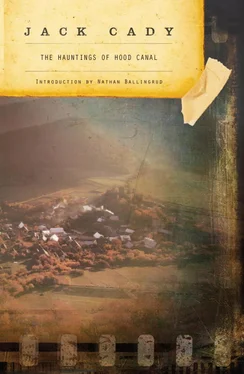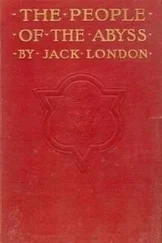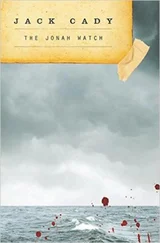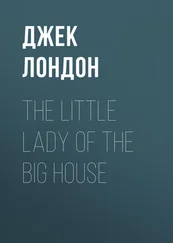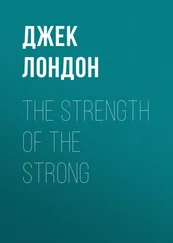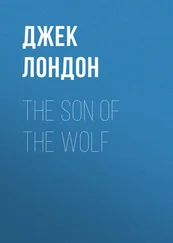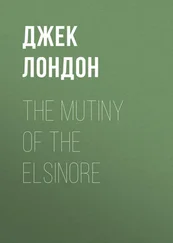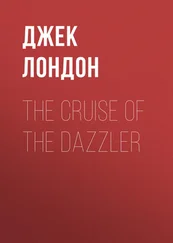Jack Cady
THE HAUNTINGS OF HOOD CANAL
For Stephen Becker (1927–1999)
Great man, great friend, great writer
And then the headman turns to the bones. For the bones a platform has been built of oak; and a stout tanned hide shelters the bones from wind and rain. The bones are of several small people, perhaps children, perhaps the smaller forefathers that figure in ceremonial tales of the ancient hot green land to the south. Thirty years ago, when these bones were taken, the headman declared that they were old, indeed, older than any bones yet seen by him, older than any head taken by the Wild Wa; perhaps even older than the headman’s grandfather’s grandfather’s grandfather. In those days men and gods roamed the earth together, and copulated freely; these bones are surely the relics of living gods.
—Stephen Becker,
The Blue-Eyed Shan
“I don’t like either one of us, you sonovabitch, but I’m sorry.”
Nathan Ballingrud
Jack Cady is one of those writers whom I keep expecting to make a big splash, but who never quite never caught on with the public imagination. He’s what’s known as a writer’s writer, which is at once the highest compliment and the kiss of death. Cady wrote prolifically and beautifully, gliding with an almost unbelievable grace over the perceived limitations of genre. His body of work offers all the particular satisfactions of fantasy while at the same time—to borrow a phrase from Salman Rushdie—it “aspires to the condition of literature.”
My first encounter with Jack Cady’s fiction came when I was in my early twenties. My friend, the writer Dale Bailey, turned me on to a story called “The Night We Buried Road Dog,” published in The Magazine of Fantasy & Science Fiction . I was a young writer with ambitions of my own, and this story seemed like a revelation to me. Cady wrote with a lyrical beauty of a kind very rarely encountered in genre fiction—or anywhere, really—and, equally as striking to me, he wrote about country people. They may have been from the Northwest, about as far from my own Southern context as one might get and still be in the contiguous United States, but I recognized those people all the same: poor, struggling, often born wretched, yet striving for some personal definition of nobility.
Jack Cady showed me how wide the sweep of fantasy fiction could be, and how beautiful its expression. I went on to read much more: The Well , The Off Season , The Sons of Noah . Then we separated for a while, as often happens between a reader and a writer when both continue to grow and evolve. Cady became a pleasant abstraction to me; an atmosphere I might access from time to time, as though I were an astronaut visiting a favorite moon.
Coming to The Hauntings of Hood Canal , all these years later, I am struck by how my perception of his writing has changed. While I am as hypnotized as I ever was by his poet’s eye for specificity and lyricism, I realize now that the people he was writing about—indeed, the world he created, over and over again—was less grounded in objective reality than in a kind of dream-America, a fantastical construction based on our best possibilities, both as a country and as individuals. In this novel especially, we are offered a kind of American myth, in which the the urge for justice must come to some kind of reconciliation with the moral ramifications of achieving that justice.
The protagonists of this book are misfits. They are bartenders, hustlers, truckers, and the assortment of peripheral oddballs that populate every small town. They are, for the most part, an honest people. Even the hustlers adhere to a moral code. There is a nobility to the con, a right way to do it and a wrong way. The hustler is a romantic figure here; he is a rebel, an individualist, an anti-government agent in the spirit of Thoreau. (You only have to read Cady’s eloquent and damning letter to the IRS, called “Dear Friends”, to see how personal this spirit is.) [Editor’s note: see the recent collection, Fathoms , for this piece.]
Even the dog—the loftily named Jubal Jim Johnson—is treated as an equal by these folks, with deference shown to his opinions and forgiveness given to his eccentricities. He is respected equally by Cady himself, who provides him with his own point of view chapters, in which we are provided an interpretation of the proceedings according to his peculiar wisdom.
At first blush, some of these depictions might come across as naive. It might seem that Cady is indulging in a nostalgia for a time that never really existed at all. But he is cannier than that. This all serves a purpose.
There are signs of incursions into this charmingly dissolute world. Land developments to the north, slumming visitors from a more affluent city, and, as we are told in the first chapter, a man who “messed with children.” A darkness is falling.
Running through town, and through the narrative itself, is Hood Canal, “branching from dark waters of Puget Sound and growing even darker as it runs a black furrow east of the Olympic Mountain range.” The canal “runs with geologic indifference before trailer parks, boat moorings, bars, bait shops, and villages. Cresting waves break wild as oceans when our world lies flogged by storms, although on windless days the Canal holds the calm of a black and nigh bottomless lake.”
Lately Hood Canal has “turned ugly,” and has taken to swallowing cars whole. Only fools and out-of-towners ride along its banks at night.
And on the second page of the book, we learn that gentle, “angelic” Sugar Bear killed the man who messed with children. “If Sugar Bear hadn’t, someone else would feel obliged.”
Cady takes his community of noble misfits and sends it crashing into the morally ambiguous territory of modern life, and it is from this collision that The Hauntings of Hood Canal derives its power. What follows is a complex drama of good people operating at cross purposes, love struggling to be born, tragedies and betrayals, and, yes, a monster dragging people into the canal to drown. As the title indicates, there is more than one kind of haunting in this story.
“All this had to happen,” Sugar Bear says at one point, wrestling with the magnitude of what he’s done. “There’s stuff that’s gonna happen no matter what anybody does, and this was some of that stuff. That don’t mean it’s right.”
And later, speaking to the man he killed: “I can’t alibi you. I can’t alibi me. I don’t like either one of us, you sonovabitch, but I’m sorry.”
The Hauntings of Hood Canal is a wrenching examination of a system of ethics which runs hard against the end of its viability, and of what happens to it then. And shot through it all is the beautiful prose for which Cady is so famous, the kind of writing which makes other writers jealous.
A woman watching the stars sees a satellite winking across them, “a peeping piece of tin.” This same woman, a few moments later, remembers talking to the trees as a little girl. “The trees always answered, and held odd, tree-like opinions.”
And here is the reminiscence of a fisherman, whose “long lines had brought from the depths colorful creatures, gasping and strange. The lines snagged an occasional carcass, sea lion, or seal, or other things. Since much of this happened in mist, and since mist is ghostly, the fisherman (like most of his clan) had seen many-a-thing walking across the water, some of those things vaguely human.”
The book you have here is something rare and amazing. It’s full of wisdom, poetry, hope, and sadness. As in real life, not all hope is rewarded, and not all sadness goes unsolved. There is a monster here, and there are good people who wonder if goodness is a thing that can be held onto. There is not necessarily an answer to that question.
Читать дальше
